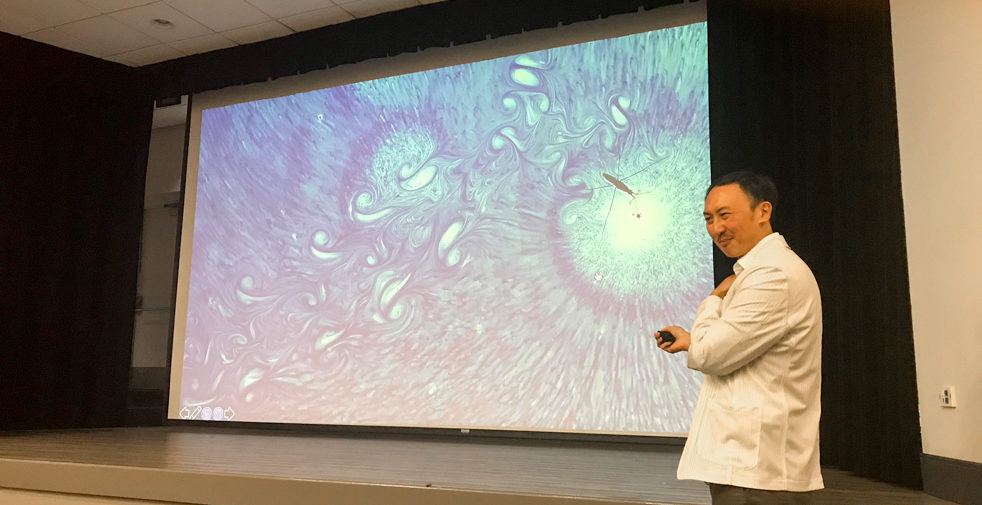This semester, the Student Government Association (SGA) has brought back the “Revolutionaries” speaker series for a second year.
“Revolutionaries” highlights outstanding faculty at Tech from diverse departments and backgrounds and gives these select professors a chance “to talk not just about boring class stuff,” according to Saif Kabariti, 4th year ME and chair of the Student Faculty Development Committee with SGA.
“Our goal is to inspire Tech students and show what the revolutionaries have done and the difficulties they’ve faced,” said Kabariti.
“We want to look at how we can learn from them and extrapolate from there.”
Dr. David Hu, Fluid Dynamics instructor for the George W. Woodruff School of Mechanical Engineering, gave the first talk of the series on Oct. 1.
Even to students whose eyes would glaze over at the words “fluid dynamics” and “engineering” found themselves enjoying Hu’s talk, which he started off by dedicating his presentation to his mom, who was working on her Ph.D. when he was born.
“I am not a revolutionary. But my mom is a real revolutionary,” he said with a laugh.
Dr. Hu received multiple degrees from MIT where he studied animals from an engineering perspective.
“When I was young, I was interested in animal movement, but just for curiosity’s sake,” he explained. “But my parents are scientists. They always encouraged me to not just enjoy things but to ask questions on how
things worked.”
At MIT, Hu’s main influences were Ig Nobel prize winners, the group of researchers whose studies invoke its students to laugh first and then think. He later on won a coveted Ig Nobel prize himself by studying the hydrodynamics of mammal urination, studying under professors who research phenomena like ponytail bounciness and teapot dribblings from a scientific perspective.
“When I saw him, I thought, this person just looks like they’re playing their entire life. I thought that was a really good path,” he said about the professor who advised him in his research.
Hu’s main research was inspired by his childhood interest in animals, specifically the waterbug.How do these waterbugs walk on water, Hu often wondered.
Using high-speed cameras, he observed how only a portion of the leg hair goes underwater so as not to break the surface tension. He described waterbugs as moving across the water “like a trampoline.”
“It’s all because their bodies are the hairiest surface in the world,” Hu explained. “Their legs are the thickness of a human hair but each leg is coated with 10,000 hairs per square millimeter.”
During the course of his talk, Hu showed clips of waterbugs and other animals who move across the water using inertia and surface tension. Then he addressed the audience’s most pressing question: of whether humans could walk on water.
Hu thought it could be possible, but only if a human had a foot with the area of a square meter and an exoskeleton.
“It seems reasonable, like a foot the size of a big garbage lid,” he told the audience.
Additionally, Hu shared about some current projects from his time at Tech, like a patent-pending flexible hairbrush designed based on a 3-D model of a cat tongue. L’Oréal has expressed interest in the project too, but, to the dismay of many in the audience, Hu shared it is not likely the hairbrush will be available in stores anytime soon.
“I learned from this a couple things,” shared Hu at the end of his presentation. “That following your curiosity to its utmost limits is actually a lot of fun, you can build really cool devices just from following things that look interesting, and lastly, teamwork.”
Kabariti, who helped found “Revolutionaries” with SGA in 2018, is one example of a student who has been inspired by the revolutionary faculty at Tech. In fact, he dreams of becoming a professor himself.
“They’re people just like us,” Kabariti said. “They’ve faced imposter syndrome too. Everyone has a chance to be just as great.”
